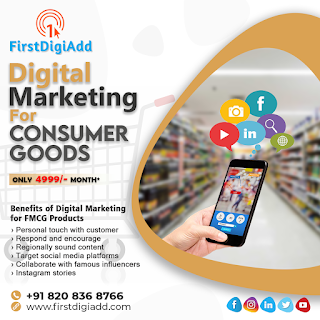What Is Branding?How It Beneficial For Branded Consumer Products
While social media has technically been around for nearly 40 years, it wasn't until the launch of Facebook just over a decade ago that social media marketing companies began to turn their attention to it as a powerful marketing tool. It used to be thought that branding would focus on print media, broadcast ads, and newsletters (email and flyers). The addition of social media meant that companies had a different way to connect with their consumers.
1. Learn The Basics
We won't go into the details of the core branding, but you need to make sure you have a consistent logo, color palette, bio, template, and pen. Some companies like to change the logo style slightly between networks depending on how little space for photos and the interests of that particular audience.
Whichever you choose, the most important thing is to make sure your profiles have a common thread that people will recognize as your brand.
2. Expand Visual Branding
So now that you have a single visual brand for all of your online accounts, it's time to improve it. What does it mean? This means that you must use the same colors and fonts that appear in your images, graphics and videos. When someone visits your Instagram page, do they immediately see a filter or color splash? When a video is published, are the fonts of the overlay text similar to the ones you use for the featured image of your blog post?
Over time, your customers will see consistency in messages and begin to recognize the message you wrote without seeing your brand logo or social media links. This type of brand awareness is the ultimate goal of your brand promotion efforts on social media.
3. Develop your Marketing Image.
Your marketing characters will be different across different networks. The audience on different apps is younger than the audience on Facebook. This is reality, and if you use the same content on both networks, it may not resonate the same way.
To this end, it is best to create multiple characters for your own marketing efforts. Start with a company's customer base and then match it to the different social media platforms you use.
4. Define The Voice And Tone Of Your Brand.
The next important branding element of your social media posts, after visuals, is the captions and associated copy. A company's social media accounts tend to have some personality. For some it is sarcastic or sarcastic, for others it is informative. You may already have a brand voice for other marketing areas. It is highly recommended to extend this to social media and develop a specific approach with a social platform.
Voice and tonal guidance should include details such as brand personality, company key phrases, personality traits, and vocabulary. Even the smallest details, such as whether you use the term "clients" or "clients", will help you maintain consistency in your letter. If multiple people manage your accounts, having a reference guide will help your team align without making it look like your company is writing from different angles.
5. Create Multiple Accounts For Different Areas Of Activity.
If your company is large enough or offers a wide range of products and / or services, it is sometimes better to have multiple accounts. The benefits of having these different accounts include being able to hyper-focus your branding, serve a specific audience, and serve relevant content.
Here are a few different approaches to doing this:
Account for each location: This is most popular on Facebook as it offers a location feature for pages (Carmax has locations configured on Facebook)
Separate Twitter accounts for marketing and customer service for those receiving a high volume of inquiries.
The audience counts every sport in which it operates, like Nike.
A mascot account, like some popular sports teams.
Specialized accounts for higher education
But it's not always easy to figure out how to succeed with lead generation. If you're just starting out, you may need help creating an effective lead generation process that generates real leads.
6. Find Your Product Or Service Relevant To Market Analysis?
A well-run SEM Services (PPC) campaign is the fastest and most effective way to determine if your products and services are in line with what consumers are looking for. They act like mini market research and can help you determine what changes need to be made to products and services.
Plus, Google Ads reports can provide you with quite a lot of information to help you determine if you need to make changes or improvements to your website.
7. Reconnect With Your Customers.
SEM campaigns also allow you to reconnect to those users who have previously visited or made purchases on your site. This is called retargeting or remarketing, and in many cases, potential customers need to see an ad multiple times before they take action and make a purchase decision. Retargeting audiences are those that have already shown interest in your products and services (i.e., they've already visited your site), and when you redirect them by showing them another ad, you're giving them a reminder that increases the likelihood of their return. your site. and possibly make a purchase.
Once you understand what SEM or Search Engine Advertising is offering your small business, you will definitely want to incorporate this into your digital marketing strategy. If you think Google or Bing ads are the next step, don't hesitate to contact us.


Comments
Post a Comment